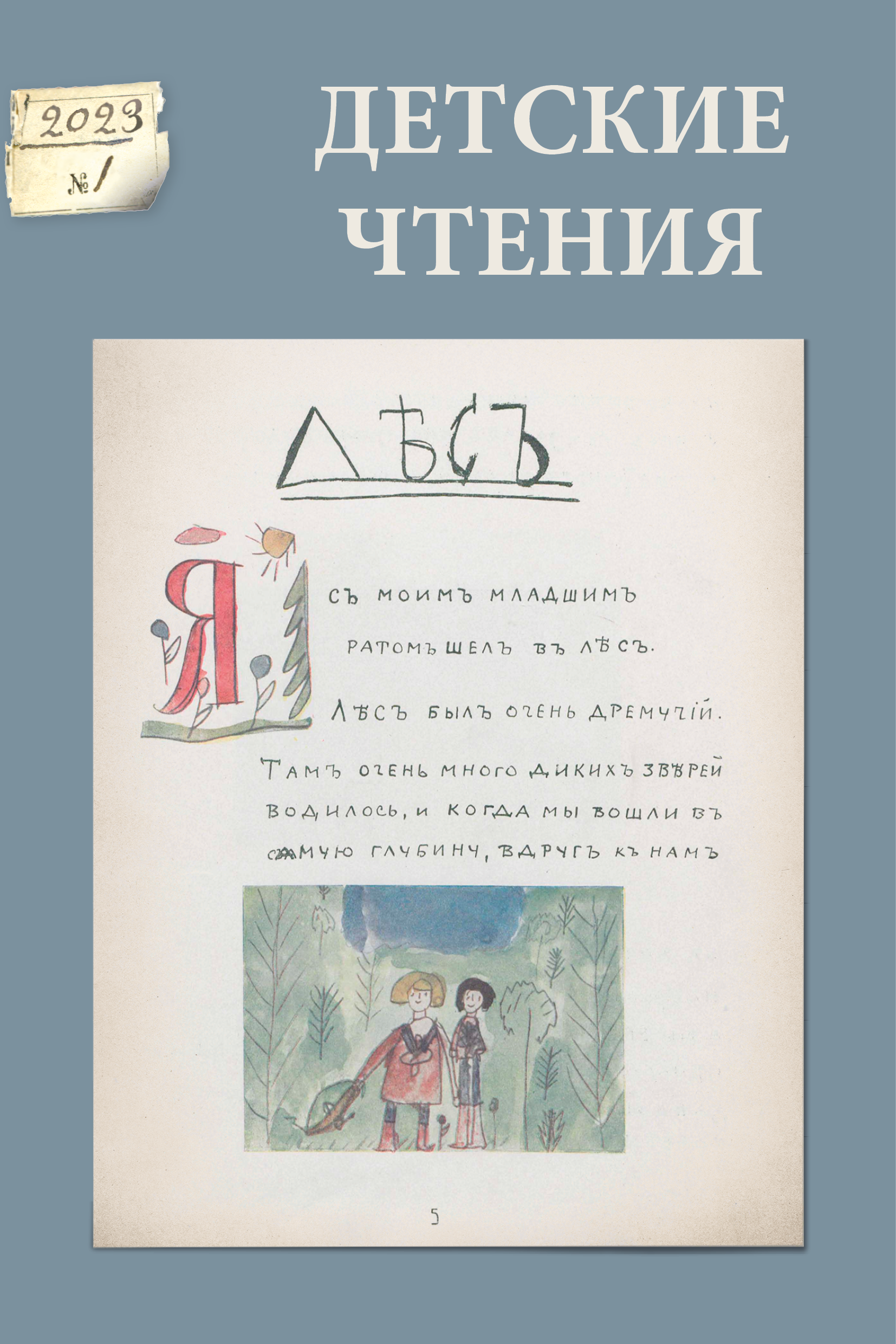CHILDREN’S TEXTS ON THE PAGES OF MAGAZINES FOR PRE-TEENS AND TEENAGES IN RUSSIA IN THE LATE 19TH AND EARLY 20TH CENTURIES
DOI:
https://doi.org/10.31860/2304-5817-2023-1-23-77-100Abstract
The article is focused on children’s letters, which were published in magazines for older children in the late 19th — early 20th century. The historiography of this topic is not too extensive. Research interest has focused on children’s essays and questionnaires of the Soviet period. Foreign researchers gave preference to the study of children’s texts of the First World War period. The source base of the article consists of children’s letters published in the magazines Zadushevnoe Slovo (“A soulful word”), Putevodny Ogonyok (“Guiding light”), Uchebnik (“Textbook”), and Rodnik (“Spring”). The article reconstructs editorial strategies of attracting readers to an active dialogue, the specificity of the content and the structure of children’s letters. By creating a relevant sample of letters from the maga- zine Zadushevnoe Slovo (“A soulful word”) and its analysis the conclusions are made about the subject of children’s correspondence and genre features of communication, the evolution of children’s language. The authors conclude that editorial strategies for organizing children’s communication through magazines were successful, turning periodicals into a space of children’s “virtual” communication, covering the most remote corners of the Russian Empire. Children’s correspondence illustrates the active involvement of young readers in magazine clubs and associations. The result of children’s epistolary communication was the mastery of the principles of written speech, the “growing up” of children’s texts in content and style. At the same time, personal interests, family, hobbies and journeys remained the dominant features of children’s letters.
Keywords: children’s letters, magazines for teenagers, virtual communication, editorial policy, World War I, Zadushevnoe slovo, Putevodnyj ogonyok, Uchenik







